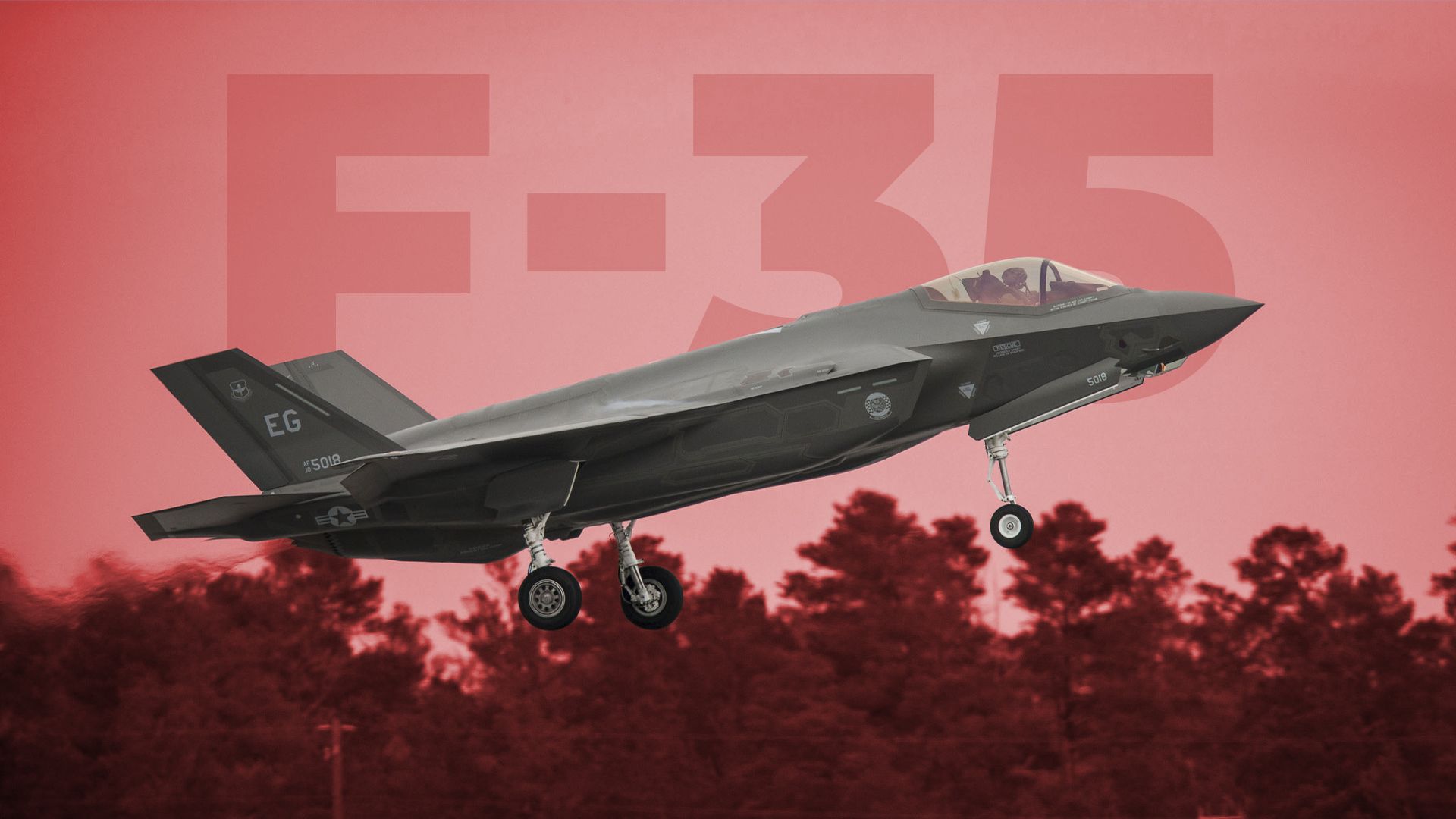World
US Finalizes $25 Billion F-35 Deal, Solidifying Global Dominance

The United States Government’s F-35 Joint Program Office (JPO) has finalized a substantial deal worth $25 billion for up to 296 additional F-35 fighter jets. This agreement, concluded on September 30, 2023, underscores the F-35’s position as not only a powerful military asset but also one of the most affordable options in its category. The average cost of an F-35 currently stands at approximately $82 million, significantly lower than its competitors like the Boeing F-15EX Eagle, which ranges from $90 million to $97 million.
The F-35, developed by Lockheed Martin, represents a culmination of decades of efforts to unify the various branches of the U.S. military and allied nations under a common aircraft platform. This global fleet has surpassed 1,230 units, a milestone achieved through efficient mass production techniques at the historic “Bomber Plant” in Fort Worth, Texas. The facility features a one-mile-long assembly line, designed to accelerate output and reduce costs.
Affordable Stealth Capabilities
The F-35 distinguishes itself from competitors primarily through its advanced stealth capabilities. While aircraft like the F-15EX may boast superior speed and payload capacity, their effectiveness in modern combat is diminished if they cannot evade detection. In contrast, the F-35’s design emphasizes stealth, which is crucial for engaging adversaries in the evolving battlefield landscape.
The F-22 Raptor, often viewed as a benchmark in stealth technology, was produced in limited numbers, resulting in an initial purchase price exceeding $150 million per unit. Estimates suggest that total lifetime costs for the F-22 could reach $350 million per aircraft. The F-35’s innovative design allows for easier upgrades and maintenance, with modular systems that facilitate rapid implementation of improvements across the fleet.
The pricing of the F-35 varies among its three variants. The F-35A serves as the base model with the simplest configuration, while the F-35B, equipped for vertical take-off and landing, is more complex. The naval variant, F-35C, incorporates larger wings and landing gear, falling in between the other two in terms of cost. For comparison, the French Dassault Rafale is estimated to be priced at around $131 million, while the Eurofighter Typhoon costs approximately $117 million, illustrating that the F-35 is 30-40% less expensive than these fourth-generation fighters still in production.
International Collaboration and Economic Impact
A key factor contributing to the lower costs associated with the F-35 program is the collaboration among multiple nations. Original partners included the United States, the United Kingdom, Italy, the Netherlands, Canada, Denmark, Norway, Turkey, and Australia. The involvement of various countries helps maintain a steady production rate, enhancing supply chain efficiency and driving down costs.
The F-35 has garnered a range of nicknames, one of which is “Fat Amy,” a playful reference to its robust fuselage housing a powerful Pratt & Whitney F135 turbofan engine. Despite its informal nickname, the F-35 has been well-received by the air forces of the 20 nations that have ordered it. The production and support network for the F-35 is equally global, with additional assembly lines located in Cameri, Italy, and Nagoya, Japan.
The assembly of an F-35 is estimated to require 42,000 hours of labor, nearly five years from start to first flight. The economic implications of the Joint Strike Fighter program are significant, with an overall impact valued at $72 billion annually, sustaining nearly 300,000 jobs primarily in the United States. The supply chain consists of approximately 1,650 vendors, with Lockheed Martin serving as the lead contractor alongside BAE Systems and Northrop Grumman.
The program also emphasizes skills development in key areas like artificial intelligence, software engineering, and cybersecurity, which are crucial for the future U.S. economy. As the F-35 program continues to evolve, it aims to provide a robust defense capability while fostering innovation and job growth.
As the most expensive defense project in U.S. history, the F-35 has surpassed previous military initiatives, including the atomic bomb and the WWII Boeing B-29 Superfortress. Developed by Lockheed Martin’s Skunk Works division, which has a storied legacy of groundbreaking aircraft design, the F-35 embodies a blend of advanced technology and mass production efficiency.
The durability and maintenance ease of the F-35 are designed to address shortcomings experienced by earlier stealth aircraft like the F-22 and B-2 Spirit. These predecessors have faced significant maintenance costs and complex upgrade cycles. In contrast, the F-35’s lower operational costs are expected to enhance fleet readiness and allow for reallocation of resources within defense budgets.
The ongoing development of the F-35 includes upcoming updates, such as the Technology Refresh iteration TR-3 and the Block 4 modernization, which will introduce up to 75 new upgrades across all variants. As the F-35 maintains its position in the forefront of air power, the strategic advantages it provides to the U.S. and allied nations will continue to shape global military dynamics.
-

 Science3 months ago
Science3 months agoToyoake City Proposes Daily Two-Hour Smartphone Use Limit
-

 Health4 months ago
Health4 months agoB.C. Review Reveals Urgent Need for Rare-Disease Drug Reforms
-

 Top Stories4 months ago
Top Stories4 months agoPedestrian Fatally Injured in Esquimalt Collision on August 14
-

 Technology3 months ago
Technology3 months agoDark Adventure Game “Bye Sweet Carole” Set for October Release
-

 World3 months ago
World3 months agoJimmy Lai’s Defense Challenges Charges Under National Security Law
-

 Lifestyle4 months ago
Lifestyle4 months agoVictoria’s Pop-Up Shop Shines Light on B.C.’s Wolf Cull
-

 Technology3 months ago
Technology3 months agoKonami Revives Iconic Metal Gear Solid Delta Ahead of Release
-

 Technology3 months ago
Technology3 months agoApple Expands Self-Service Repair Program to Canada
-

 Technology3 months ago
Technology3 months agoSnapmaker U1 Color 3D Printer Redefines Speed and Sustainability
-

 Technology3 months ago
Technology3 months agoAION Folding Knife: Redefining EDC Design with Premium Materials
-

 Technology4 months ago
Technology4 months agoSolve Today’s Wordle Challenge: Hints and Answer for August 19
-

 Business4 months ago
Business4 months agoGordon Murray Automotive Unveils S1 LM and Le Mans GTR at Monterey









